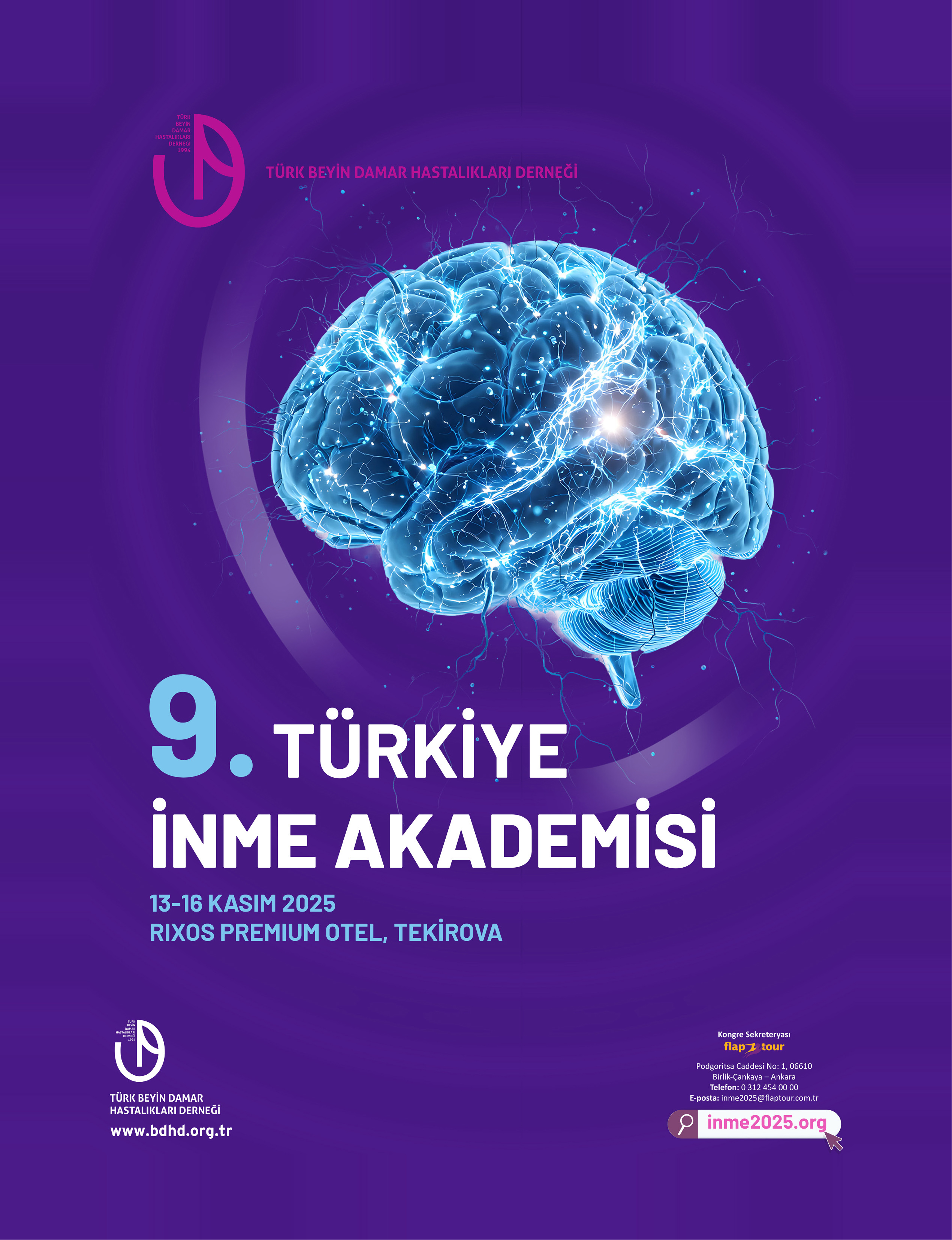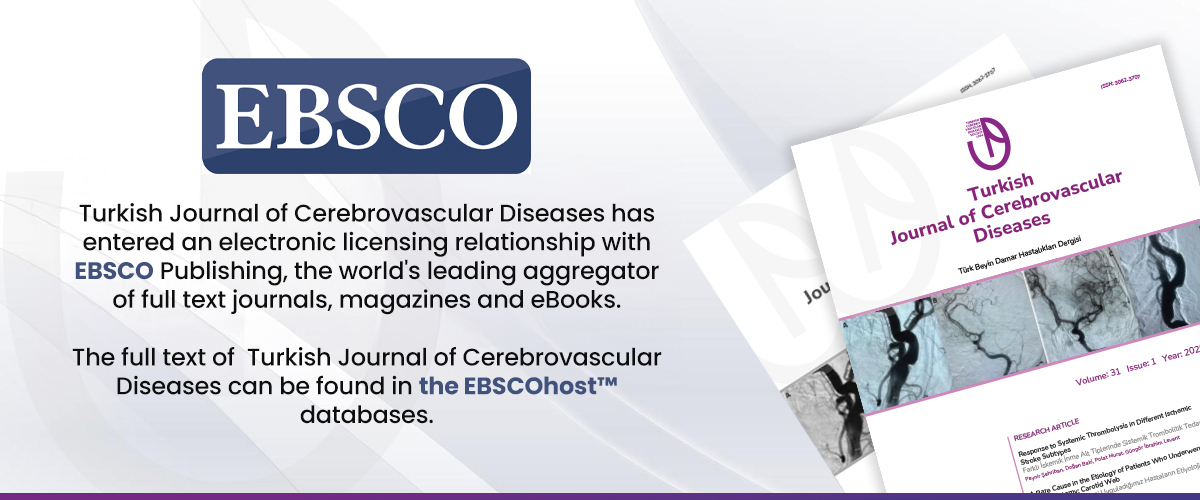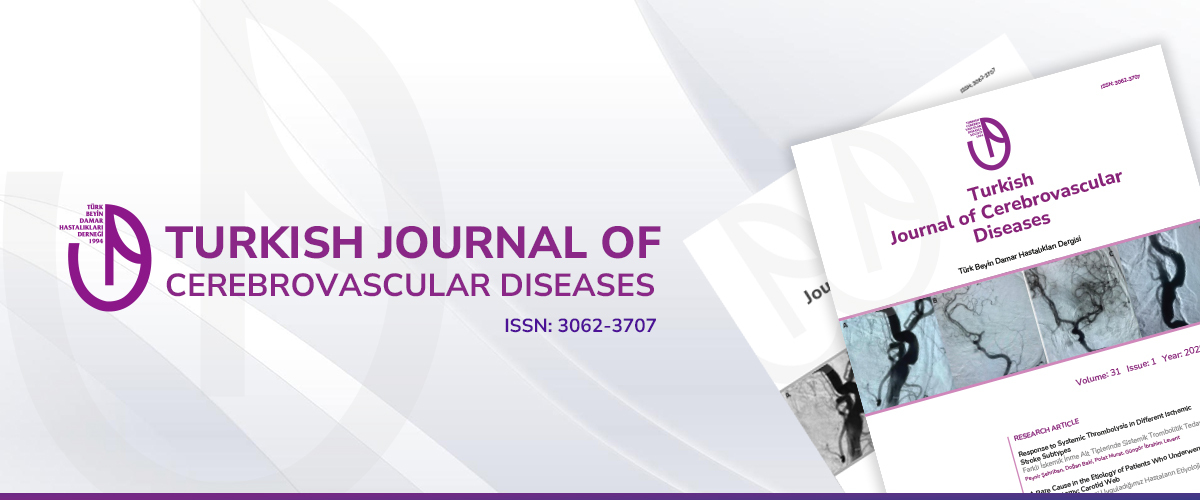Instructions to Authors
General Information
Before submitting a manuscript, authors are strongly encouraged to consult the journal’s Policies page for comprehensive information on submission requirements, peer-review procedures, publishing standards, and ethical guidelines. To learn more about the journal’s aims, scope, and structure, please visit the About section.
Authors may use the Pre-Submission Check tool to assess the readiness of their manuscript. This tool can assist in identifying potential issues or omissions before formal submission.
Originality and Prior Presentation
Manuscripts submitted for consideration must be original, unpublished, and not under review elsewhere in either print or digital form. If the study has been previously presented at a scientific meeting or conference, authors must clearly state the name, date, and location of the event during submission.
Ethical Standards and Reporting Guidelines
Manuscripts should be prepared in accordance with the latest update of the ICMJE Recommendations for the Conduct, Reporting, Editing, and Publication of Scholarly Work in Medical Journals (May 2022).
Depending on the type of study, authors are expected to comply with the relevant international reporting guidelines listed below:
- Randomized trials and clinical studies: CONSORT (and SPIRIT for study protocols)
- Observational studies: STROBE
- Diagnostic accuracy studies: STARD
- Systematic reviews and meta-analyses: PRISMA (and PRISMA-P for protocols)
- Animal experiments: ARRIVE and Guide for the Care and Use of Laboratory Animals, 8th Edition
- Nonrandomized public health interventions: TREND
- Genetic association studies: STREGA
- Qualitative research: SRQR
To determine the appropriate guideline for your research, you can consult the Equator Network decision tool.
Authors are also encouraged to adhere to the Sex and Gender Equity in Research (SAGER) guidelines to promote the responsible integration of sex and gender dimensions in research design and reporting. In addition, the EASE Guidelines for Authors and Translators may be consulted to improve clarity, accuracy, and structure in academic writing.
Manuscript Style and Format
All submissions must conform to the AMA Manual of Style, 11th Edition.
Manuscripts can only be submitted via the journal’s official online manuscript submission system. Submissions sent via email or by individuals other than the authors will not be processed.
Required Documents for Initial Submission
The following documents must be uploaded at the time of initial submisssion:
Manuscript files should be prepared with Microsoft Office Word. The online submission system will direct authors during all stages of submission and provide necessary support for accelerating the submission process. A list of the files that should be supplied through the online submission system is provided below.
- Title Page
- Main Text
- Tables, Graphs and Figures
- Copyright Transfer Form
- ICMJE Uniform Disclosure Form for Potential Conflicts of Interest
These forms are available for download on the journal’s website: www.tjcvd.org.
Manuscript Preparation Guidelines
Title Page
A separate title page must be submitted for all manuscripts and should include the following information:
- Full title of the manuscript and a short running title (maximum 50 characters)
- Full names, academic degrees, institutional affiliations, and ORCID IDs of all authors
- Details of financial support, if applicable
- Full contact details of the corresponding author, including phone number and email address
- Acknowledgments for individuals who contributed but do not meet authorship criteria
- If any author is a member of the journal’s Editorial Board, this must be disclosed
Abstract
All submissions, except Letters to the Editor, must include an abstract. Abstracts for research articles must be structured under the following headings: Background, Methods, Results, and Conclusion. Please consult the journal’s formatting table for specific word limits.
Keywords
Authors must provide between three and six keywords at the end of the abstract. Keywords must be written in full (no abbreviations) and should be selected from the Medical Subject Headings (MeSH) database.
Main Points
All manuscript typesexcluding Letters to the Editorshould include 3 to 5 key points summarizing the core findings and central message of the study. These should be written clearly and concisely in plain language that is accessible to both experts and general readers. This section plays a critical role in conveying the significance and impact of your research at a glance.
Manuscript Types
Research Articles
Original research articles should present novel findings based on empirical research. Acceptance is primarily based on the originality, scientific rigor, and relevance of the study. The main text of the manuscript must follow a structured format, typically including the sections: Introduction, Material and Methods, Results, Discussion, and Conclusion.
Authors are expected to discuss the limitations and potential weaknesses of their study in the Discussion section, ideally before the conclusion paragraph.
For word count and figure/table limits, please refer to Table 1.
Clinical Trials
The journal adheres to the ICMJE policy on clinical trial registration, which requires all clinical trials to be registered in publicly accessible registries recognized by the WHO International Clinical Trials Registry Platform (ICTRP) or ClinicalTrials.gov. Registration promotes transparency, integrity, and public trust in clinical research.
Please take note of the following criteria for clinical trial submissions:
- Registration is required only for prospective studies evaluating health-related interventions by assigning participants to different groups.
- Trials must be registered prior to or at the time of enrollment of the first participant.
- The journal accepts registries that provide the minimum 24-item dataset as recommended by ICMJE.
- A data sharing plan must be included with the trial registration. See the “Data Sharing” section for more information.
- Authors should consult both the ICMJE Clinical Trial Policy and COPE's Data and Reproducibility Guidelines for further reference.
Reporting of Statistical Analysis
Statistical analysis must be clearly described and justified in a dedicated subsection under Materials and Methods. Authors should adhere to internationally accepted standards for statistical reporting (e.g., Altman DG et al., BMJ, 1983).
Statistical tools and software used in the analysis must be explicitly stated. Numerical data such as P values and confidence intervals (CIs) should be consistently and appropriately reported:
- P values should typically be reported to two decimal places (e.g., P = .02).
- If the first two digits are zeros, use three decimal places (e.g., P = .002).
- P values close to .05 may be shown to three decimal places (e.g., P = .053) for clarity.
- P values smaller than .001 should be written as P < .001, not as exact values (e.g., not P = .000003).
Review articles provide a critical and balanced overview of current knowledge in a specific field and are usually written by experienced authors with a strong record of relevant publications. Submissions may be invited or unsolicited.
While authors are free to organize their review as they see fit, each article should include at least an Introduction and a Conclusion section.
Refer to Table 1 for specific length and format restrictions for review articles.
Letters to the Editor
This category allows readers to share opinions, critiques, or observations related to previously published articles or other topics relevant to the journal's scope. Letters may also highlight noteworthy clinical cases or raise awareness on overlooked issues.
Letters should be unstructured and must not include abstracts, keywords, tables, figures, or media files. The referenced article must be appropriately cited within the letter text.
Editorial Comments
Editorial Comments are concise critiques or perspectives written by experts at the invitation of the editorial team. These contributions address articles published in the journal and offer insightful context or analysis.
Editorial Comments do not include abstracts, keywords, tables, figures, or media content.
Opinion Articles
Opinion pieces express the author's perspective on emerging ideas, theories, or controversies in the field. These articles are rooted in evidence-based reasoning but do not include original data or unpublished research.
They aim to stimulate academic discourse and critically assess current paradigms. Opinion pieces are typically 2,0002,500 words, may include a short abstract (~150 words), 12 tables or figures, and at least 5 references.
Invited Expert Opinion
Invited Expert Opinion articles present expert insights, responses, or discussions on timely topics and questions identified by the journals editorial board based on current needs and developments. These articles are accepted by invitation only and reflect the authors professional analysis and perspective supported by relevant literature. There are no strict restrictions on word count, tables, figures, or references; however, authors are encouraged to present their content concisely, and the editorial board reserves the right to request revisions for clarity and length. Abstracts must be unstructured and must not exceed 150 words. Submissions in this category should include clear sections such as introduction, background, expert commentary, discussion of challenges and controversies, recommendations or outlook, and conclusion. References must be formatted according to AMA style.
Guidelines
Guidelines are evidence-based documents developed or endorsed by professional associations, working groups, or expert committees to provide practical recommendations for clinical practice or research in the field of neurology. These manuscripts must be prepared by recognized experts and based on a comprehensive review of current evidence. Abstracts must be structured and must not exceed 500 words. There are no strict limitations on overall word count, number of tables, figures, or references; however, authors should ensure clarity and relevance, and the editorial board reserves the right to request shortening or revisions where necessary. Guidelines should include defined sections describing the scope, methods, evidence grading, recommendations, definitions and terminology, special considerations, implementation and limitations, future directions, and a conclusion. References must follow AMA format.
Images in Neurology
This section features notable and educational clinical images relevant to the field of Neurology. Submissions should include:
- A brief and clear description of the clinical context
- High-resolution images illustrating unique or classic findings
Image files must be uploaded as standalone .JPG or .TIFF files with a minimum resolution of 300 DPI and a minimum dimension of 100x100 mm. Substandard images may result in delays in the editorial process.
Please refer to Table 1 for formatting limitations for this category.
Table 1. Manuscript Category Limitations
Type of manuscript |
Word limit* |
Abstract word limit |
Reference limit |
Table limit |
Figure limit |
Original Article |
3500 |
250 (Structured) |
30 |
6 |
7 or total of 15 images |
Review Article |
5000 |
250 |
50 |
6 |
10 or total of 20 images |
Letter to the Editor |
500 |
No abstract |
5 |
No tables |
No media |
Images |
500 |
No abstract |
5 |
No tables |
4 or total of 8 images |
Clinical Trial |
3000 |
250 |
30 |
6 |
5 or total of 10 images |
Editorial Comment |
1000 |
No abstract |
5 |
No tables |
No media |
Opinion |
2000-2500 |
150 words |
5 |
2 |
1 or total of 2 images |
*The stated word limits for each manuscript type do not include the abstract, references, figure legends, or tables.
Please refer to Table 2 for manuscript headings.
Table 2. Manuscript Headings
Manuscript Type |
Manuscript Headings |
Full-Text Headings |
Original Article |
Structured abstract: |
Introduction |
Review Article |
Unstructured abstract |
Introduction |
Case Report |
Structured or semi-structured abstract: |
Introduction |
Letter to the Editor |
No required |
Main text (free structure, no section headings) |
Tables
Tables must be embedded at the end of the main document, following the reference list, and should be numbered consecutively as they appear in the text. Each table should include a clear, concise title placed above the table. Any abbreviations used must be defined below the table in footnotes, even if they have been explained in the main text.
Tables must be created using the table tool of your word processing softwareavoid inserting tables as images or text boxes. Data within tables should be easily readable and clearly organized. Tables should not duplicate information from the main text but rather enhance and support the findings.
Figures and Figure Legends
All figures must be uploaded as separate high-resolution files in either TIFF or JPEG format. Figures should not be embedded in the manuscript file. If a figure includes multiple parts (e.g., A, B, C), each subunit must be uploaded individually; do not combine them into one image file.
Use the figure legend to describe different parts of the image rather than labeling the figure itself. Descriptive tools such as arrows, arrowheads, asterisks, or stars may be used to highlight key features, but identifying information (e.g., names or institutions) must be removed to maintain anonymity.
All figures must be submitted at a minimum resolution of 300 DPI and dimensions of at least 100x100 mm. Inadequate image quality may lead to delays in the review and publication process.
Figure legends should be placed at the end of the main manuscript document, and figures should be referenced in the main text in sequential numerical order.
Abbreviations
All acronyms and abbreviations should be spelled out upon first mention, both in the abstract and in the main text. The abbreviation should follow the full term in parentheses and be used consistently throughout the manuscript.
Product Identification
When referring to any specific drugs, medical devices, software, or products, authors must include complete identification information in parentheses: product name, manufacturer, and location (city, state/province if applicable, and country). Example: Discovery St PET/CT scanner (General Electric, Milwaukee, WI, USA)
Supplementary Materials
Supplementary materials such as videos, audio clips, extended datasets, appendices, or additional figures and tables must be submitted separately after the references section. Each supplementary file must be accompanied by a brief description that explains its relevance to the manuscript. Page numbers are not required for supplementary materials.
References
References and in-text citations must be formatted in accordance with the AMA Manual of Style, 11th Edition.
- Citations must appear as superscript numerals following punctuation in the main text.
- Authors are responsible for ensuring reference accuracy and consistency.
- Prefer recent sources to reflect current knowledge in the field.
- If citing an ahead-of-print publication, include the DOI in the reference list.
- Use Index Medicus/MEDLINE/PubMed abbreviations for journal titles.
Author Listing:
- For works with six or fewer authors, list all authors.
- For works with seven or more authors, list the first three followed by “et al.”
Reference Format Examples:
Journal Article
Taylor M, Chen R, Williams A, et al. Cortical thinning patterns in early cognitive decline: a voxel-based morphometry analysis. J Neurol Imaging. 2023;41(2):134-141. doi:10.3275/jni.2023.04125
Book Section
Anderson L. Sleep disturbances in Parkinson's disease. In: Miller D, Huang Y, eds. Handbook of Clinical Neurology and Aging. 1st ed. Cambridge Health Press; 2022:112-124.
Book (Single Author)
Morgan S. Introduction to Neuroepidemiology: Principles and Practice. Oxford University Press; 2021.
Edited Book
Reed T, Patel N, eds. Advances in Translational Neuroscience. 2nd ed. Global Medical Publishing; 2023.
Thesis
Henderson K. EEG Biomarkers of Visual Attention in Early Alzheimer’s Disease [dissertation]. University of Edinburgh; 2020.
Website
International League Against Epilepsy. Guidelines for classification of seizures. Accessed March 5, 2024. https://www.ilae.org/guidelines/seizure-classification
Epub Ahead of Print
Nguyen T, Robinson J, Ali K, et al. Neuroinflammatory changes in traumatic brain injury: a PET and MRI study. Neuroinflamm J. Published online February 18, 2024. doi: 10.4827/nij.2024.00942.
Video (YouTube)
Johns Hopkins Neurology. Brain Mapping Techniques in Epilepsy Surgery. YouTube. Published October 10, 2023. Accessed March 1, 2024. https://www.youtube.com/watch?v=examplevideo4567
Social Media Post (Twitter/X)
American Academy of Neurology (@AANMember). Did you know rapid response can reduce stroke damage? Learn more this World Stroke Day. X (formerly Twitter). Published October 29, 2023. Accessed November 2, 2023. https://twitter.com/AANMember/status/1718912390747639808
Language Editing
Upon acceptance, all manuscripts undergo language editing by the journal’s editorial service provider to ensure clarity, coherence, and adherence to academic standards. This includes grammar, syntax, punctuation, and formatting improvements as necessary.
Proofing and Publication
After copyediting, the accepted manuscript will be made available as an "ahead-of-print" article onlineallowing early access to research prior to inclusion in a specific journal issue.
The corresponding author will receive a notification email with access to the web-based proofing system. Within this platform, authors can review the final layout and request corrections directly in the interface. Authors typically have 48 hours to review and approve the proof.
Corrections should be limited to typesetting, grammar, and minor formatting errors. Major content changes may only be made with the approval of the editorial office.
Disclaimer
The opinions and statements expressed in the articles published in Turkish Journal of Cerebrovascular Diseases are solely those of the author(s). They do not necessarily reflect the views of the editors, editorial board, or publisher. The editorial board and publisher disclaim any responsibility for errors or omissions. The final responsibility for the content lies with the authors.











